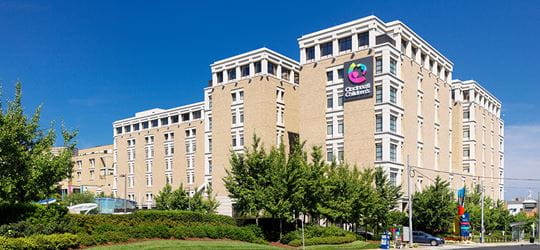
Anne Slavotinek, PhD, MBBS
- Director, Division of Human Genetics
- Professor, UC Department of Pediatrics
- anne.slavotinek@cchmc.org
- Board Certified
About
Biography
As a geneticist, I see various conditions and patients of all ages. Genetic conditions are common, although some are individually rare. I'm interested in discovering the cause of rare diseases, including congenital disabilities or anomalies that affect how one grows and develops. The idea is that knowledge about the cause of genetic conditions will one day lead to treatments.
My work in the clinic allows me to evaluate and treat patients. After clinic, I often think about the patients and families I've seen and try to do something more, looking for additional resources, trying to obtain research testing, or involving someone studying the condition who can view my patients from a different perspective.
I became interested in genetics after attending a division seminar for the first time. The talk featured the discovery of a new gene and a novel mechanism for causing disease. I found it incredibly interesting but never dreamed of working in medical genetics as a doctor. However, I was working in an institute that focused on genetics research. One day, while looking for jobs, I saw a position advertised for clinical training in medical genetics. "That's it!" I remember thinking to myself. "That's what I want to do.” I was fortunate enough to get that job and start my career in a growing field of medical care that many find uniquely rewarding.
I'm co-editor of the American Journal of Medical Genetics, a journal focused on medical genetics. I'm also a past Chair of the American Board of Medical Genetics and Genomics.
When I’m not working, I like to be outdoors. Growing up in Australia taught me to love nature.
MBBS: University of Adelaide, South Australia, 1987.
PhD: Flinders University, South Australia, 1995.
Registrar and Senior Registrar: Churchill Hospital, Oxford, United Kingdom and St. Mary's Hospital, Manchester, United Kingdom.
Residency: National Human Genome Research Institute, National Institutes of Health.
Interests
Medical genetics; dysmorphology
Services and Specialties
Interests
Developmental eye defects; genomics; multiple congenital anomaly syndromes
Research Areas
Location
Insurance Information
Cincinnati Children's strives to accept a wide variety of health plans. Please contact your health insurance carrier to verify coverage for your specific benefit plan.
Publications
An optimized variant prioritization process for rare disease diagnostics: recommendations for Exomiser and Genomiser. Genome Medicine: medicine in the post-genomic era. 2025; 17:127.
New patients with duplication of the pituitary gland-plus syndrome, including a PTCH2 variant and a literature review. Journal of medical genetics. 2025; 62:726-733.
Case Report: Association of Ocular Colobomas With a Novel Missense Variant in CDC42, a Member of the Rho Family of Small GTPases. Clinical Genetics: an international journal of genetics and molecular medicine. 2025; 108:589-593.
A Case of Prader-Willi Syndrome With a Deletion Including MAGEL2 , NDN , and MKRN3 , but Excluding SNRPN and SNORD116. American Journal of Medical Genetics, Part A. 2025; 197:e64070.
Case Report: A novel missense variant in ZC4H2, c.196C>T p.(Leu66Phe), is associated with a mild, ZC4H2-related X-linked syndromic intellectual disability (ZARD) phenotype. Frontiers in Pediatrics. 2025; 13:1518782.
Genomic sequencing in diverse and underserved pediatric populations: Parent perspectives on understanding, uncertainty, psychosocial impact, and personal utility of results. Genetics in Medicine. 2025; 27:101363.
A zebrafish model of crim1 loss of function has small and misshapen lenses with dysregulated clic4 and fgf1b expression. Frontiers in Cell and Developmental Biology. 2025; 13:1522094.
BCL11A intellectual developmental disorder: defining the clinical spectrum and genotype-phenotype correlations. European Journal of Human Genetics. 2025; 33:312-324.
P338: Studying the role of the DIP2C gene in humans and zebrafish. Genetics in Medicine Open. 2025; 3:102303.
P262: Transformative care through genome sequencing: Insights from the first 100 patients in the CincyKidsSeq Study. Genetics in Medicine Open. 2025; 3:102227.





Patient Ratings and Comments
All patient satisfaction ratings and comments are submitted by actual patients and verified by a leading independent experience management company, Qualtrics. Patient identities are withheld to ensure confidentiality and privacy. Only those providers whose satisfaction surveys are administered through Cincinnati Children’s Hospital Medical Center are displayed. Click here to learn more about our survey